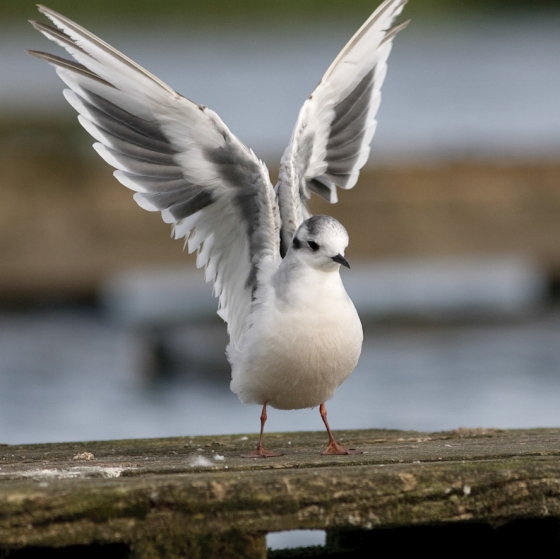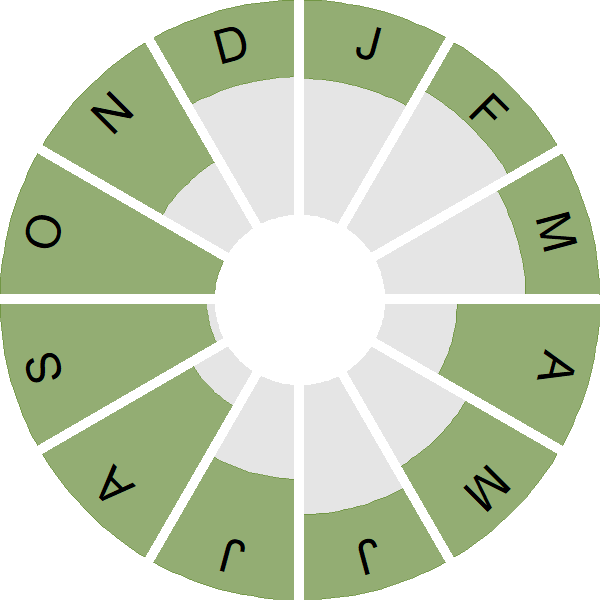Little Gull

Introduction
This dainty gull is most often seen during its northward spring migration, when small parties can turn up along the coast or even at inland waters.
A very attractive bird in smart summer dress, the adult Little Gull has a black hood, dusky underwings, small black bill and bright red legs. It sits high in the water, when its white wingtips can be seen. In flight it is light and airy, and dips to the water surface to pick up invertebrate prey.
Some Little Gulls stay in Britain all winter, an increasing trend likely to be caused by the a range expansion in western Europe. Individuals may be seen on sea-watches, particularly after strong winds and winter storms when occasional individuals are blown to inland reservoirs and lakes.

Key Stats
Identification
ID Videos
This section features BTO training videos headlining this species, or featuring it as a potential confusion species.
Kittiwake & Other Small Gulls
Small Black-headed Gulls
Songs and Calls
Call:
Status and Trends
Conservation Status
Population Size
Population Change
Little Gull is an occasional breeder in the UK, but there has only been one successful breeding attempt to date, by a pair that successfully fledged two young at the Loch of Strathbeg RSPB reserve in north-east Scotland in 2016; breeding had previously occured in Norfolk in 1978 and 2007 but the eggs failed and were predated respectively [Holling & the Rare Breeding Birds Panel 2018]. Little Gull is also a passage migrant and winter visitor in the UK. The number of Little Gull records in winter has increased considerably since the 1950s and the species has also expanded its range by 44% since the early 1980s; most records are coastal, although individuals are occasionally seen inland, often as a result of onshore gales [Balmer et al. 2013].
Distribution
Little Gulls winter south to the Mediterranean and the Atlantic Ocean off North Africa, though small numbers remain in the Irish Sea, English Channel and North Sea. Numbers seen in winter around the UK vary annually depending on the weather conditions; during onshore gales they may be reported from nearby coasts and occasionally inland. Little Gulls are a very rare and sporadic breeder in the UK.
Occupied 10-km squares in UK
2007/08–10/11
or view it on Bird Atlas Mapstore.
2008–11
or view it on Bird Atlas Mapstore.
European Distribution Map
Distribution Change
Records of Little Gulls have increased considerably in Britain & Ireland since the 1950s and a 44% winter range expansion is apparent since the 1981–84 Winter Atlas. This is likely to be linked to the westward extension of the species' breeding range.
Change in occupied 10-km squares in the UK
from 1981–84 to 2007–11
or view it on Bird Atlas Mapstore.
from 1968–72 to 2008–11
or view it on Bird Atlas Mapstore.
Seasonality
Little Gulls are recorded throughout the year, with peaks in spring and autumn passage.
Weekly pattern of occurrence
The graph shows when the species is present in the UK, with taller bars indicating a higher likelihood of encountering the species in appropriate regions and habitats.

Movement
Britain & Ireland movement
Foreign locations of birds ringed or recovered in Britain & Ireland
Dots show the foreign destinations of birds ringed in Britain & Ireland, and the origins of birds ringed overseas that were subsequently recaptured, resighted or found dead in Britain & Ireland. Dot colours indicate the time of year that the species was present at the location.
- Winter (Nov-Feb)
- Spring (Mar-Apr)
- Summer (May-Jul)
- Autumn (Aug-Oct)

European movements
EuroBirdPortal uses birdwatcher's records, such as those logged in BirdTrack to map the flows of birds as they arrive and depart Europe. See maps for this species here.
The Eurasian-African Migration Atlas shows movements of individual birds ringed or recovered in Europe. See maps for this species here.
Biology
Productivity and Nesting
Nesting timing
Egg measurements
Clutch Size
Survival and Longevity
Survival is shown as the proportion of birds surviving from one year to the next and is derived from bird ringing data. It can also be used to estimate how long birds typically live.
View number ringed each year in the Online Ringing Report.
Lifespan
Biometrics
Wing length and body weights are from live birds (source).
Ring Size
Classification, names and codes
Classification and Codes
- Order: Charadriiformes
- Family: Laridae
- Scientific name: Hydrocoloeus minutus
- Authority: Pallas, 1776
- BTO 2-letter code: LU
- BTO 5-letter code: LITGU
- Euring code number: 5780
Alternate species names
- Catalan: gavina menuda
- Czech: racek malý
- Danish: Dværgmåge
- Dutch: Dwergmeeuw
- Estonian: väikekajakas
- Finnish: pikkulokki
- French: Mouette pygmée
- Gaelic: Faoileag-bheag
- German: Zwergmöwe
- Hungarian: kis sirály
- Icelandic: Dvergmáfur
- Irish: Sléibhín Beag
- Italian: Gabbianello
- Latvian: mazais kiris
- Lithuanian: mažasis kiras
- Norwegian: Dvergmåke
- Polish: mewa mala
- Portuguese: gaivota-pequena
- Slovak: cajka malá
- Slovenian: mali galeb
- Spanish: Gaviota enana
- Swedish: dvärgmås
- Welsh: Gwylan Fechan
Research
Causes of Change and Solutions
Causes of change
The increase in sightings of Little Gull around the UK is thought to be linked to a westward expansion of the species' breeding range to the Netherlands, Denmark, Sweden, Norway and Finland and associated population increase [Balmer et al. 2013]. It has been suggted that increasing numbers of birds are resting offshore in the North Sea whilst undergoing their post-breeding moult and before continuing their migration to the non-breeding grounds [Hartley 2004].
More Evidence
More evidence from Conservation Evidence.com
Partners
Citing BirdFacts
If you wish to cite particular content in this page (e.g. a specific value) it is best to use the original sources as linked in the page. For a more general citation of the whole page please use: BTO (20XX) BirdFacts Species: profiles of birds occurring in the United Kingdom. BTO, Thetford (www.bto.org/birdfacts, accessed on xx/xx/xxxx).

